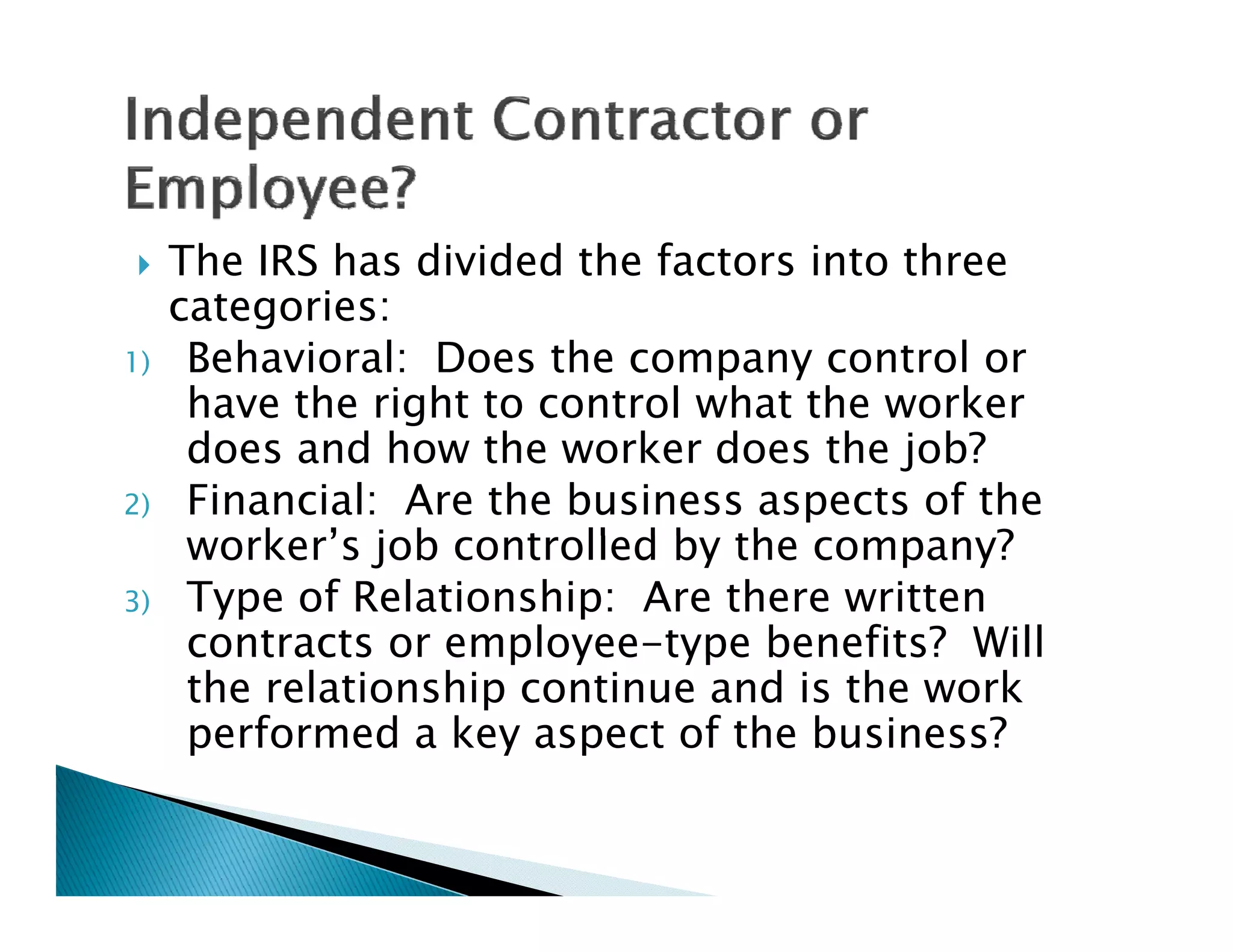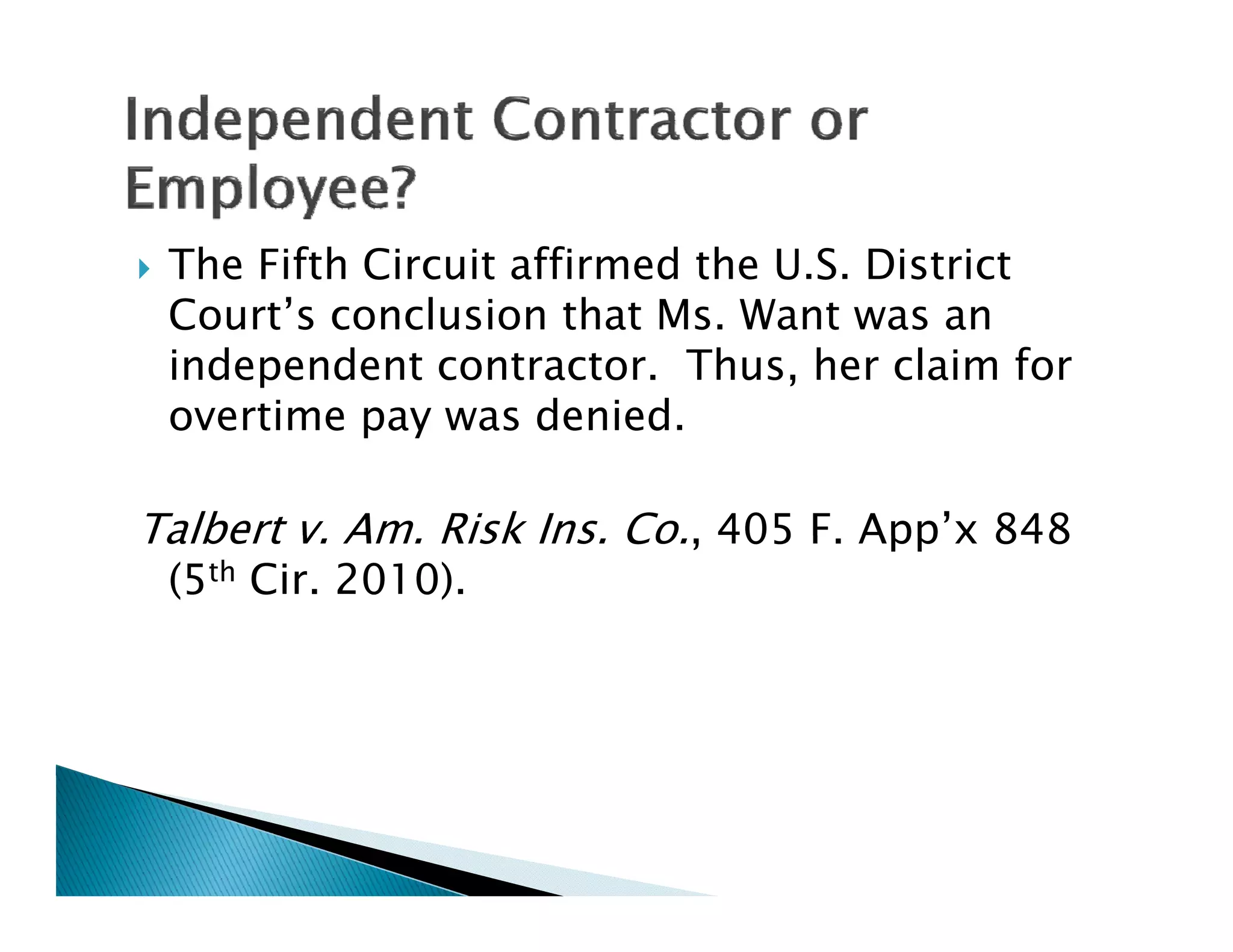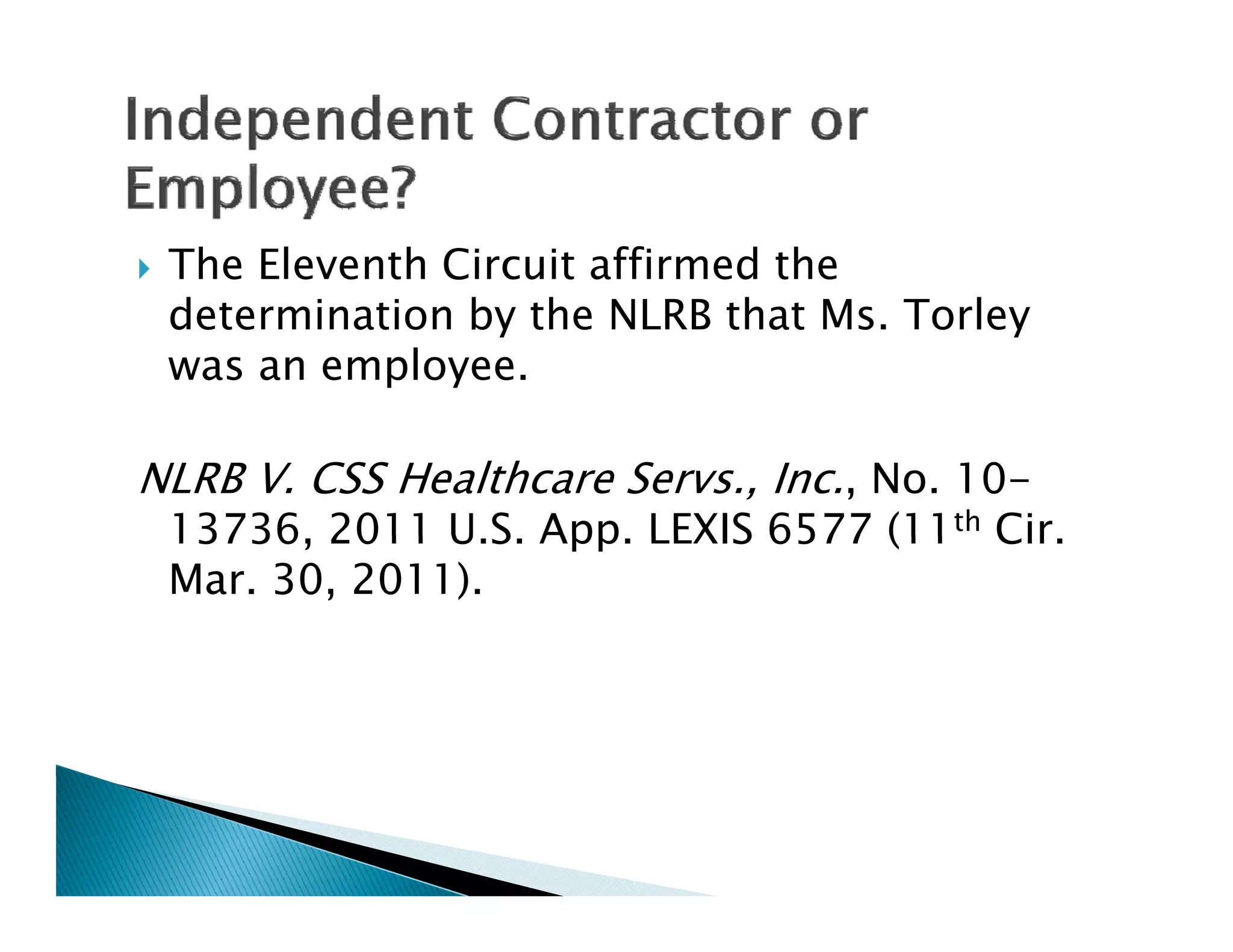The document discusses the implications of worker misclassification, highlighting the liabilities related to payroll taxes, back wages, and employer-funded mandates. It emphasizes the IRS's multi-factored test to classify workers as independent contractors or employees, which includes behavioral, financial, and relationship factors. Several case studies illustrate the outcomes of misclassification claims, concluding that appropriate classification can mitigate legal risks for employers.











